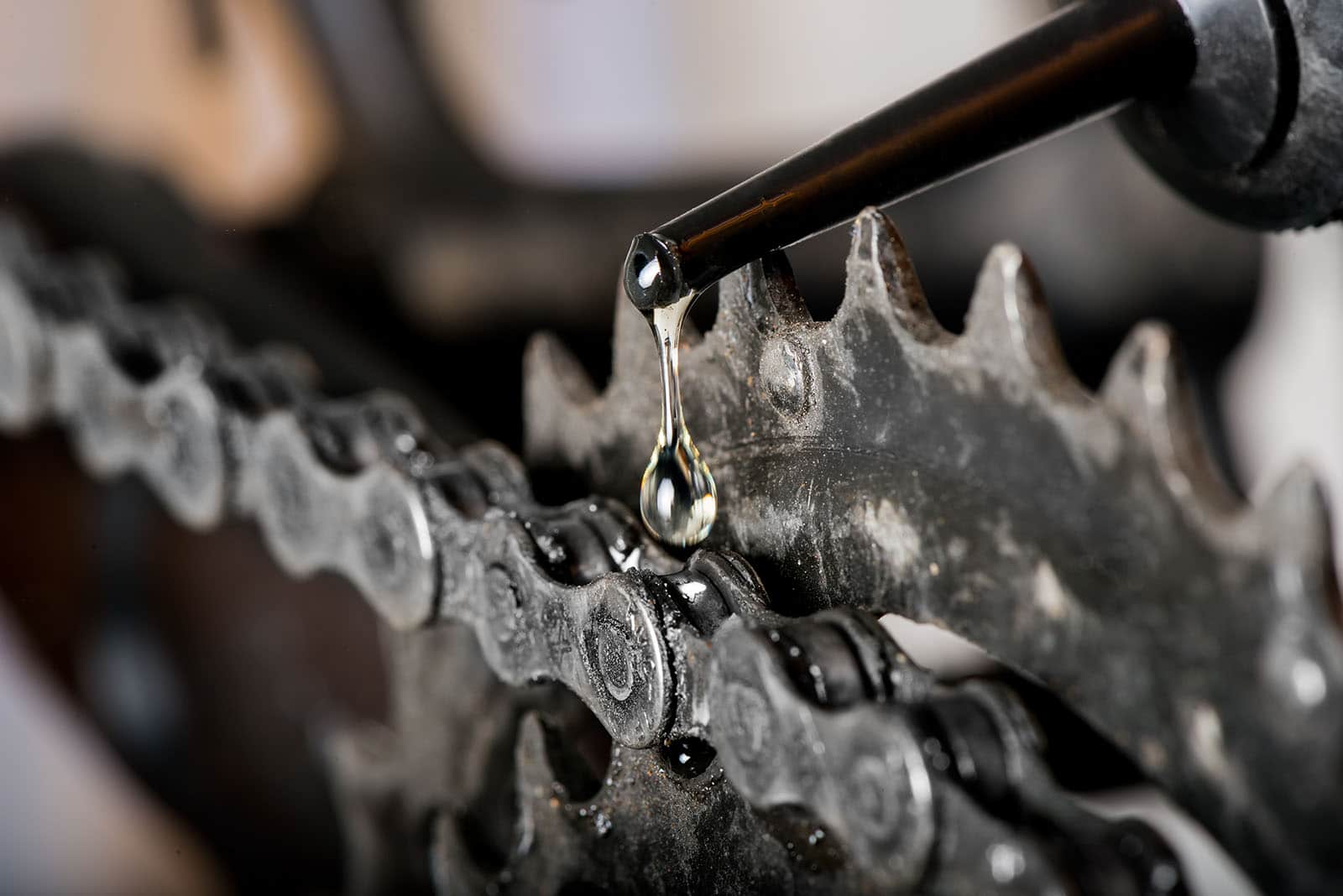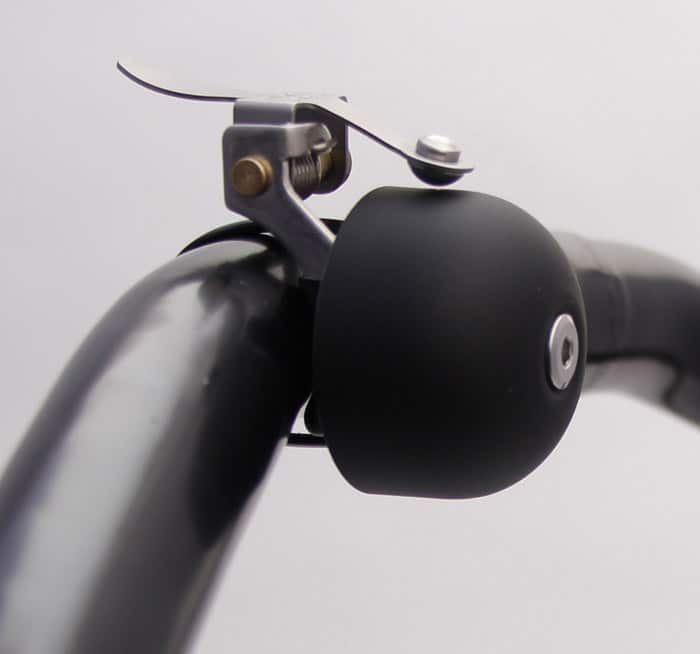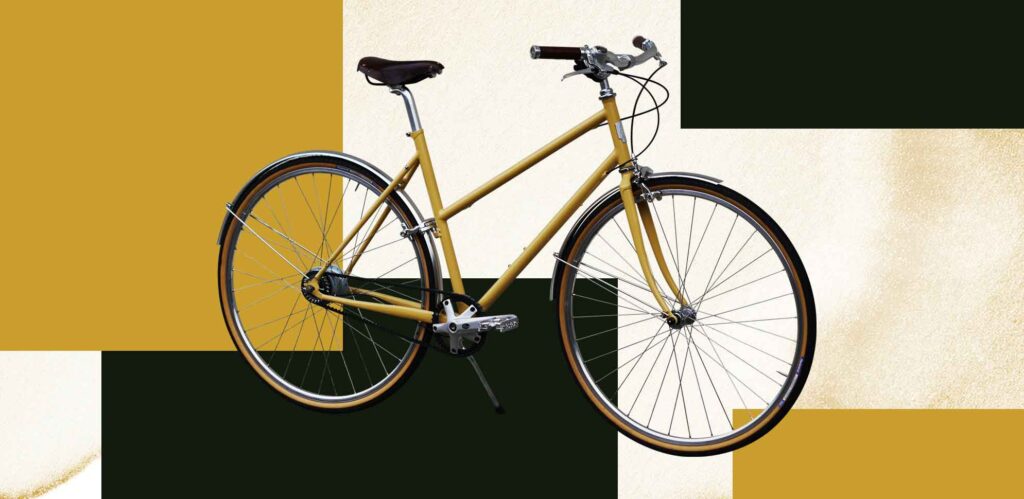In advance: Be sure to clean before lubrication
It is not enough to simply lube the chain. Even if you have only ridden one tour, it makes sense to always clean the chain first. After all, dirt accumulates on it over time. Dust on the road or especially the salt in winter are poison for the chain and should be removed as soon as possible before even a drop of oil touches the links.
Because if only lubrication is used, the dirt moves further and further into the links until it finally destroys them. The wear of the chain is incomparably higher.
The cleaning
The best thing to do is to take a bucket of water and chain cleaner (in a pinch, soapy water will do if you don’t have a proper cleaner on hand). See paragraph “What we can not recommend”) with a cloth or sponge. The chain cleaner will reliably remove all dirt and especially old grease.
If you want to be environmentally friendly – which we of course recommend – make sure that the chain cleaner is biodegradable. The best place to use it is an official washing station, as they have special collection containers for water with oil residues.
After cleaning, you can rinse the chain again with clean water. Then dry the chain well, because when left to dry rust can quickly form, which of course would not be good for the chain.
Which lubricant should be used?
The most important thing in advance: never use WD40. The reason is that it is much more liquid (so-called low viscosity) than conventional chain oil and displaces the lubrication of the chain over time. In the worst case, it can lead to increased wear. WD40 should be used at most for cleaning, because it degreases and protects the chain from rust.
Commercial chain oil from the bike store is therefore the first choice. This is available in different variations. You do not necessarily have to order the one chain oil on the Internet. But if you don’t want to leave this to chance, you can take a look at a comparison here:
https://www.vergleich.org/kettenoel/ (always up to date)
We use the chain oil from Finish Line and can highly recommend it to you. The oil is available as a drop applicator. Many chain oils are also available as a spray. We prefer the drop applicator. For the effect, however, this makes no difference.

How do I lube my chain?
It is best to lube each chain link selectively – if possible on the inside. This can be done with a spray as well as with a drop applicator. With the drop applicator, you can simply place the tip on the chain, press out oil with light pressure and move the chain. With a well-dosed spray, of course, it also works. But watch out! No grease should get on the brake, the brake disc or brake flank. Best you hold a cloth behind it.
For excess oil from the chain to wipe best take a simple cloth. So that everything is well distributed, wait about 10 minutes before you wipe off the excess oil with the cloth.
How often should I lube my chain?
This depends largely on the use of your bike and how much the chain is exposed to dirt. If you ride your bike to work every day in all weathers, we recommend a very regular maintenance of the chain. Preferably weekly.
At the latest when the chain no longer runs silently and rattles, you should urgently think about a new lubrication.
How much does a good chain oil cost?
Good chain oil is not that expensive. A good base oil usually costs less than € 10 and holds out relatively longtime. Even the special oils are often not much more expensive. And chain cleaner is also available for little money. Therefore, we advise against some alternatives in the next point.
What we can not recommend
Dishwashing liquid, brake cleaner, diesel/gasoline or high-pressure cleaners are not or only conditionally recommended!
Flushing agent is not intended to clean chains. While it won’t damage your chain, it also doesn’t fulfill the purpose of a chain cleaner, as dishwashing liquid can’t penetrate as deeply into the chain links.
Brake cleaner degreases very strongly and is therefore highly effective. But after treatment, the chain is completely unlubricated and no longer has any rust protection. Therefore, the chain would have to be lubricated immediately after cleaning with brake cleaner.
Gasoline or diesel would remove grease, but is much too dangerous! Finger away!
The bike has many moving and sensitive parts such as sealing rings, derailleur rolls, etc.. A high-pressure cleaner can therefore quickly damage the parts and spray grease out of the bearings. Not recommended!
And now get on your bike!
Have fun cleaning and caring! 🙂
You have comments or questions?








